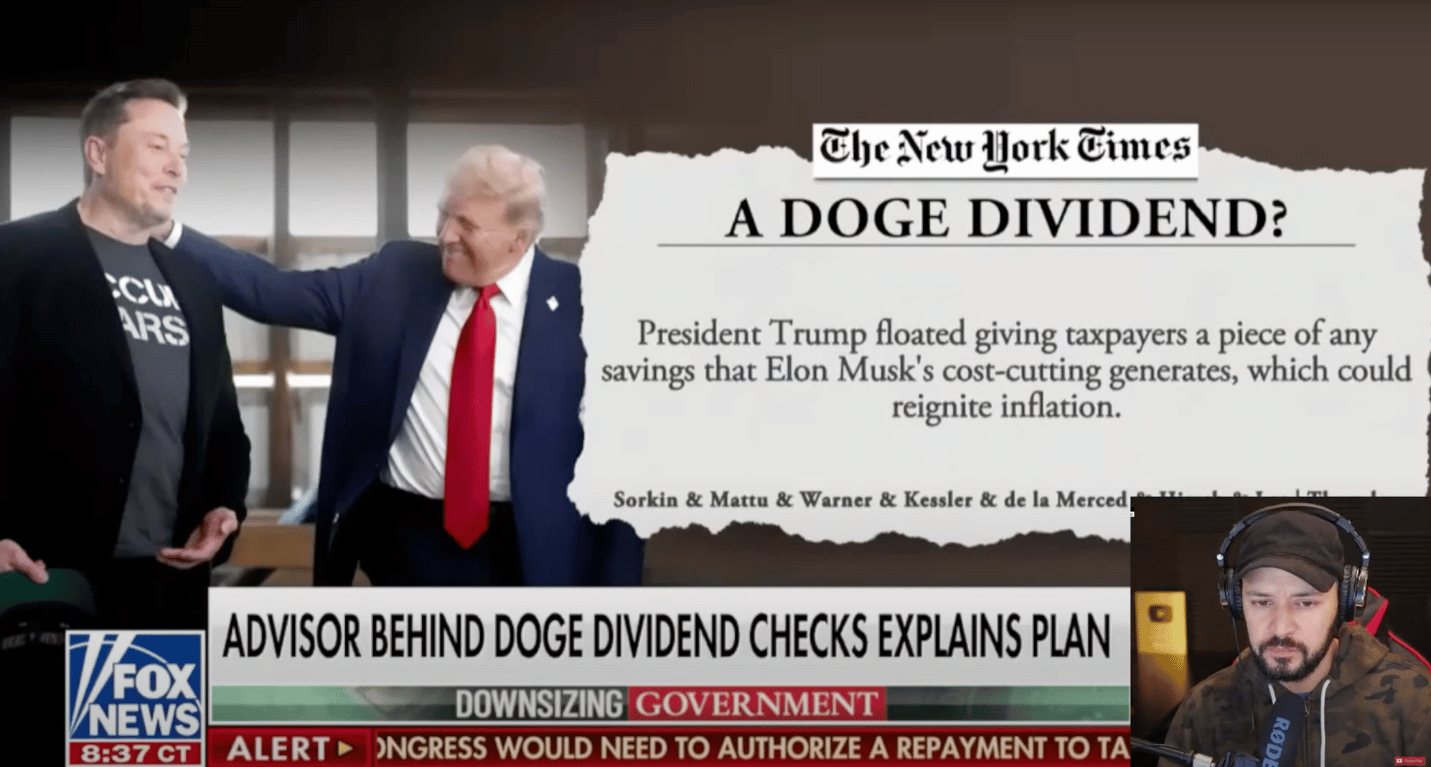Official Proposal Details Who Will Receive Payments
What began as a dream-inspired idea just four days ago has rapidly transformed into concrete legislation being drafted in both chambers of Congress. The proposal to distribute “Doge dividend” checks from government savings identified by the Department of Government Efficiency (Doge) is now taking shape, with clear eligibility requirements emerging.
Focus Point News has obtained details directly from the official proposal drafted by James Fishback, CEO of investment firm Azoria and originator of the Doge dividend concept. The document, available at mydogedividend.com, outlines exactly who would qualify for the estimated $5,000 payments.
Eligibility Requirements Confirmed
According to the official proposal, eligibility for the Doge dividend checks is straightforward but specific:
- Only households that are net payers of federal income tax in fiscal year 2025 will qualify
- Payments would go to approximately 79 million U.S. taxpaying households
- Each qualifying household would receive one payment (not per individual)
- The payment amount is estimated at $5,000 per household if Doge reaches its full savings target
“The conditional nature of the tax refund, available only to payers of federal income tax in fiscal year 2025, incentivizes labor force participation,” states the official proposal document, which has been endorsed by Elon Musk and presented to President Trump.
This means individuals who do not pay federal income taxes – approximately 40% of Americans according to some estimates – would not receive the payments under the current proposal.
White House Confirms Congressional Action
In a significant development, the White House has confirmed that both chambers of Congress are actively working to incorporate the Doge dividend into reconciliation legislation.
When asked about the timeline for these payments during a recent press briefing, a White House spokesperson stated: “This is all going to be worked on through the reconciliation process with Congress that’s going underway right now. As you’ve seen, the Senate’s moving a bill, the House is moving a bill. The president has great confidence in both chambers to deliver on his priorities.”
The reconciliation process would allow the proposal to pass through the Senate with a simple majority rather than facing a potential filibuster.
Musk and Trump Both “Supportive”
Speaking at the Conservative Political Action Conference (CPAC), Elon Musk confirmed presidential backing for the proposal.
“I talked to the president and he’s supportive of that,” Musk told the audience. “So it sounds like that’s something we’re going to do.”
Musk described the payments as “money that’s taken away from things that are destructive to the country and from organizations that hate you, to you,” calling it “the spoils of battle.”
President Trump echoed this sentiment at a recent event, stating he was considering “a new concept where we give 20% of the Doge savings to American citizens and 20% goes to paying down debt.”
How the $5,000 Figure Was Calculated
The proposed payment amount derives from the ambitious savings target set for Doge:
- Doge is targeting $2 trillion in total savings
- 20% of those savings ($400 billion) would be distributed to taxpayers
- Dividing $400 billion among approximately 79 million taxpaying households equals roughly $5,000 per household
However, this amount could vary based on actual savings achieved. Fishback has acknowledged that if Doge achieves $500 billion in savings rather than the full $2 trillion, checks would be closer to $1,250 per household.
Current verified savings are estimated between $8.6 billion (per Bloomberg and ABC News) and $51.7 billion (per Doge’s live tracker), indicating the program has a long way to go to reach its target.
Addressing Inflation Concerns
Some economists have expressed concern that distributing billions in payments could fuel inflation, similar to how pandemic stimulus contributed to price increases.
Fishback directly addresses this in the proposal: “The Doge dividend checks are exclusively funded with Doge-driven savings. Unlike COVID stimulus checks which were deficit-financed, Doge dividend checks are sent only to taxpaying households who have demonstrated a propensity to save, not spend, the incremental dollar received.”
The proposal cites a 2019 CNBC survey indicating that 71% of Americans who unexpectedly receive a $5,000 payment would either pay off debt, save it for emergencies, or invest it in long-term goals.
A White House spokesperson also dismissed inflation concerns: “If we reduce government spending, then that reduces inflation. And if you give people money, then they’re going to save a bunch of it, and when they save it, that also reduces demand, reduces inflation.”
Not All GOP Leadership Onboard
Despite backing from the President and progress in Congress, some Republican leaders have expressed reservations about the dividend checks.
House Speaker Mike Johnson acknowledged the political appeal but questioned the fiscal responsibility of the proposal: “Politically that would be great for us. You know, then everybody [gets] a check. But if you think about our core principles, right? Fiscal responsibility is what we do as conservatives. That’s our brand. And we have a $36 trillion federal debt.”
This internal disagreement within Republican leadership could potentially impact the final form of the legislation.
